Aggression in a multi-cat household can be a stressful experience. Catfights can quickly get out of hand and can easily cause injuries to one or both of the cats involved.
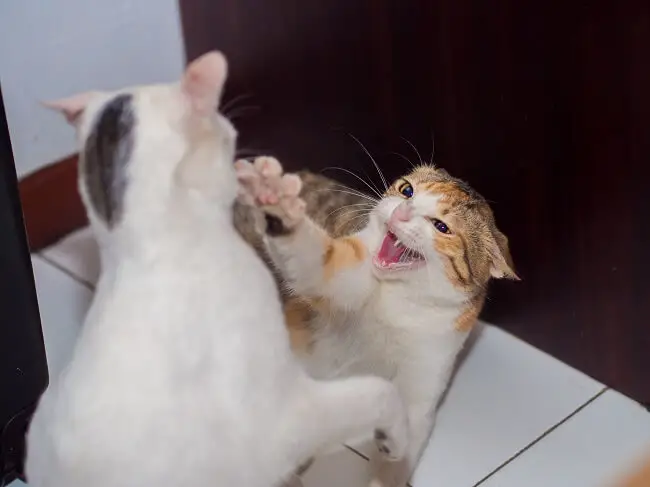
Fortunately, there are ways to prevent the conflict and put a stop to the bullying.
Contents
Signs of Bullying in Cats:
- One cat physically pushing the other away to claim access to owners or resting places
- Staring
- Pouncing onto the other cat (especially when they are asleep)
- Sitting in front of entry/ exit points to block the way
- Blocking access to the litter tray
Possible Reasons for the Bullying or Fighting
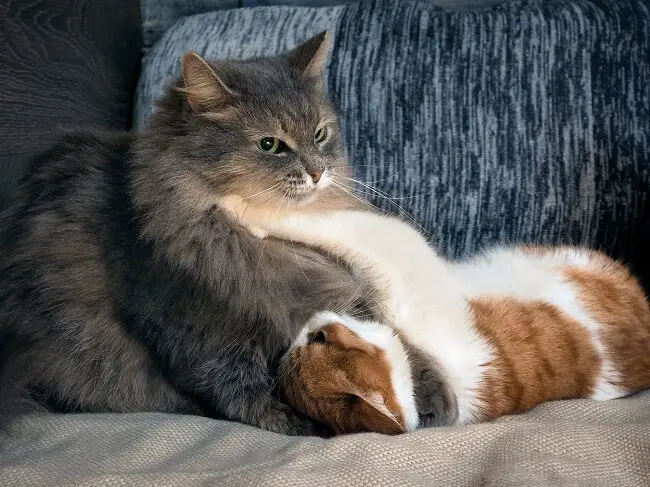
There are multiple reasons your cat may be bullying your other cat, here are some of the most common causes:
- Your cats have not been spayed or neutered and are the same sex (the fighting likely worsens during the mating season too)
- There have been changes in the cat’s group (introducing more cats or taking cats out of the house can cause conflict)
- There have been changes to the environment e.g. moving furniture, feeding stations and litter boxes
- One or both of your cats have reached maturity and are beginning to challenge each other for status
- There are not enough resources (e.g. feeding areas, cat trees, hides, beds, litter boxes) for them both causing territorial aggression
Simple Solutions to Stop Bullying
When it comes to bullying and fighting between cats, early intervention is best to stop the situation from getting out of hand. It will take time and patience but stopping the fighting is important for your cat’s health and wellbeing (and yours too!).
Here are some simple ways you can reduce conflict in your home:
- Spay or neuter your cats. This common, routine procedure solves the vast majority of aggression problems between cats. It is the most effective way to prevent bullying as it reduces the frustration and aggression that provokes attacks between cats.
- Add more toys, litter boxes, cat trees, hides and feeding areas around the house. This will reduce competition between the cats and prevents cats from having to share these territorial areas. Use the ‘one per cat plus one’ rule, for example, if you have 2 cats you should have at least 3 litter boxes.

- Do not reward bad behaviours (read more on how to deal with a badly behaved cat here). Giving food to the cat that is showing aggression in an effort to stop the behaviour is actually inadvertently rewarding them. It may give you a short-term solution to the fighting but it will cause more problems in the long term. Rather than using treats, try to redirect the cat’s attention using an interactive toy. Once the cat has stopped being aggressive you can then give treats and attention.
- Increase the amount of interactive play between you and your cat, sometimes an aggressive cat is redirecting their energy onto other cats in the house. Increasing play time will help to keep your cat stimulated and use up their energy in a fun way. If you don’t have time to play games with your cats, introducing a couple of interactive toys may be a good way to get them playing while you’re at work.
- Calming products such as Feliway can help prevent aggressive situations.
Try Going Back to Basics
If your cats are not getting along and are frequently showing hostility towards each other, you may need to go back to basics and introduce them as if it is the first time they are meeting.
You can do this by separating your cats for a couple of days and then slowly re-introduce them using positive reinforcement. First, allow them to interact through a door (e.g. place their food on either side of the closed door so they can be closer to each other while doing something they like to do – eating). As well as this you can get them used to each other’s scents by switching the cats around or by switching their blankets and toys.
Now that they are used to each other’s smells and they are associating each other with positive things like food, treats and toys you can introduce them. You may first want to introduce them with one or both of the cats confined to crates and then build up to them being free to walk around and interact as they please. It is important to keep both cats distracted with treats and play during these introductions.
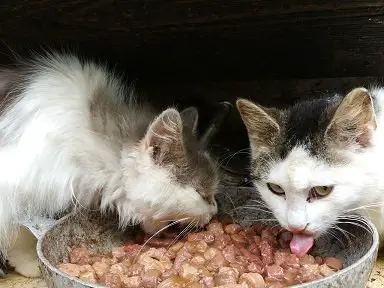
When the cats are happy to eat and play when they are close to each other they can be left alone together. Keep the interactions short at first so as not to put too much pressure on the friendship. Before long, your cats will be able to be left alone and there should be no more bullying.
If you are having a hard time getting your cats to bond, a behaviour specialist will be able to observe the triggers and offer suitable solutions to your situation.
Offer Separate Areas
Although not ideal, you may want to offer your cats separate areas within the house. By installing a microchip cat flap you could give the bullied cat a place to go that cannot be accessed by the other cat.
The room should have a nice cat bed, a hide and a litter tray. This will reduce conflict and give the victim a safe place within the home.
How to Break Up a Fight Between Cats
It may be tempting to physically try to break up the cat fight but avoid doing this. Breaking up the cats in this way will escalate the issue and you will come out of it worse for wear. It may also cause a loss of trust between you and your cats. Instead, try to distract your cats.
You can do this clapping your heads or making a loud banging noise when you are out of sight of both cats. This should distract them and put a stop to the fighting.
As an Amazon Associate I may earn a small fee from qualifying purchases at no extra cost to you. This helps us run the site, so thanks for your support!

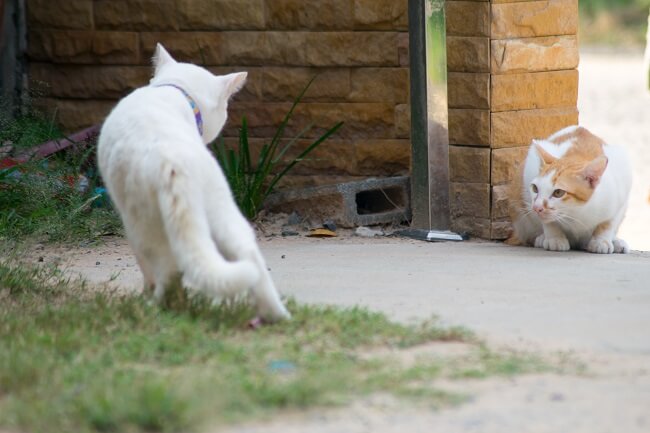
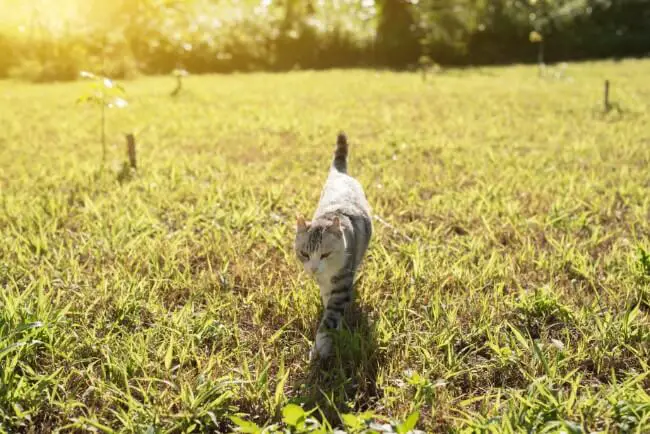



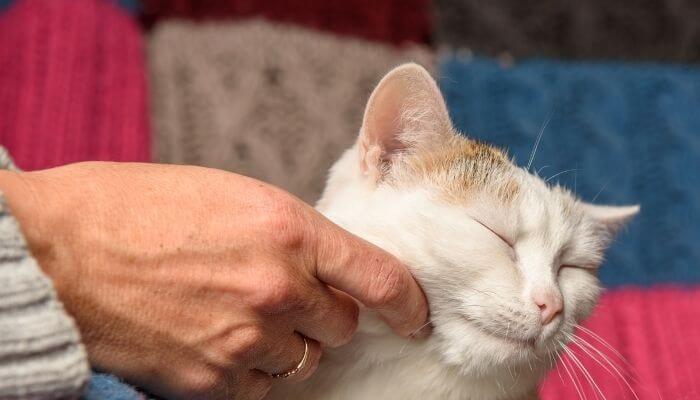
Leave a Comment